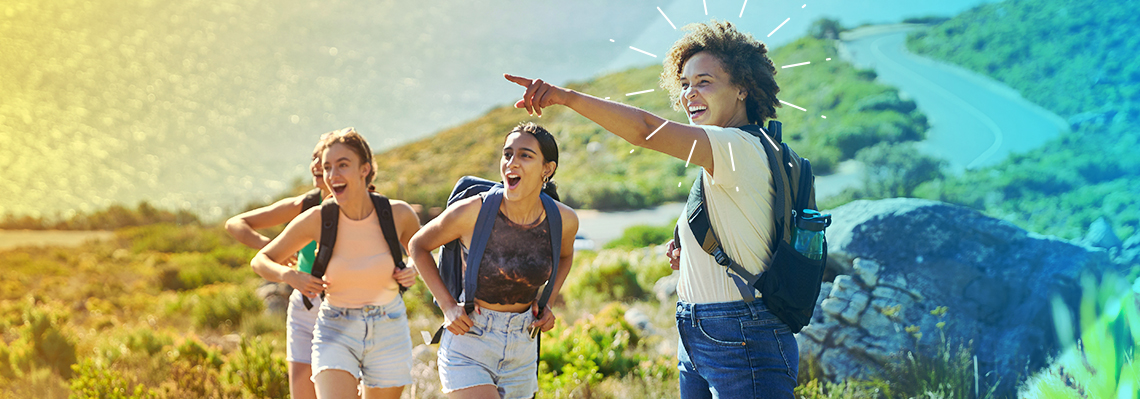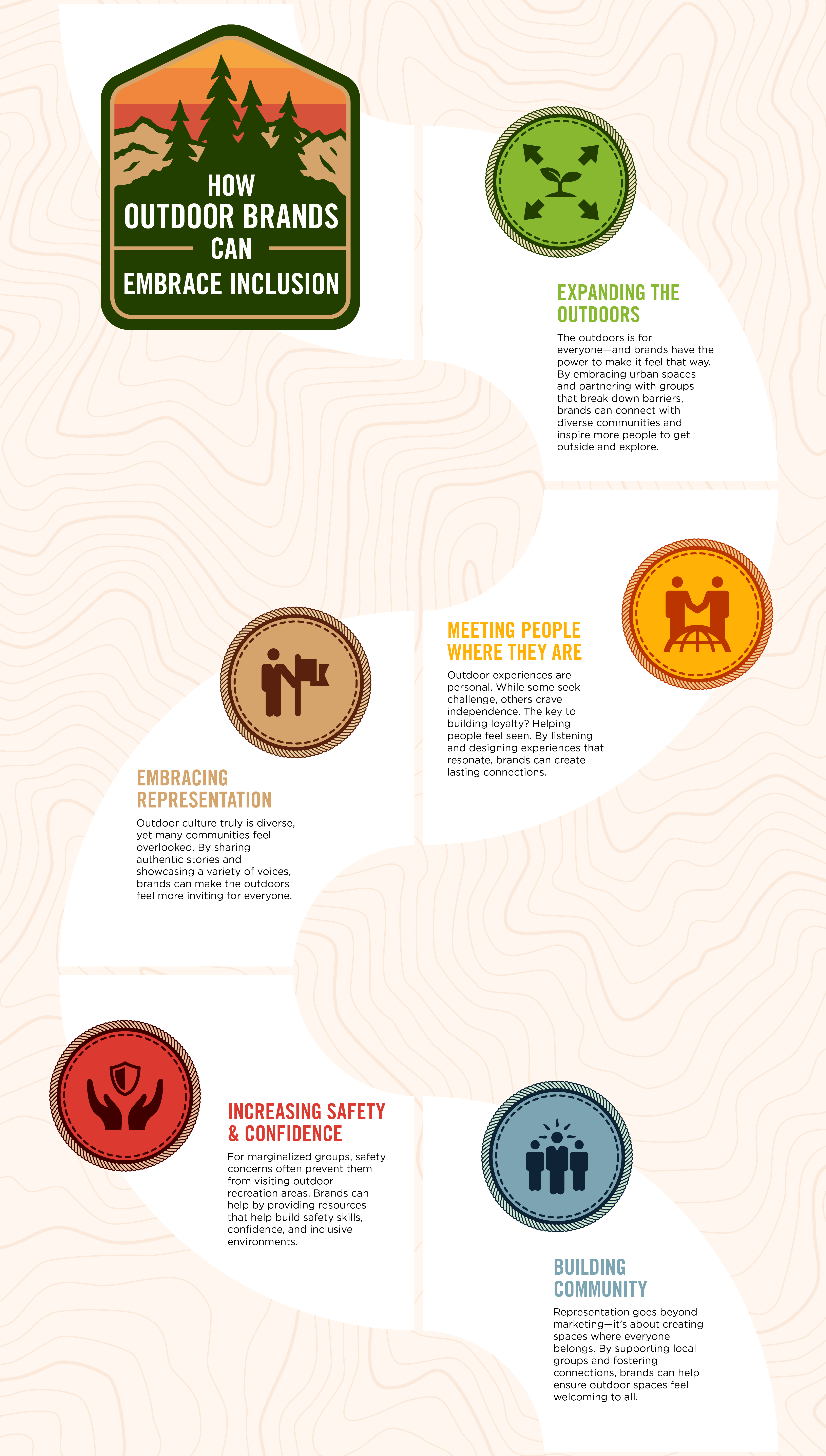
Embracing Inclusion: How Outdoor Brands Can Inspire and Empower Everyone
The outdoors is a place for everyone — a space where people of all backgrounds should feel welcome, safe and inspired to explore. While progress has been made, there are still meaningful opportunities for outdoor brands to expand their reach and better connect with a diverse audience.
In recent years, several noteworthy outdoor brands have made efforts to bridge the representation gap within the fitness and recreation spaces. Yet, some individuals still visit parks without seeing anyone who looks like them. They may also feel uncertain about their safety and sense of belonging in outdoor environments.
The truth is, welcoming diverse communities into the outdoor space isn’t just the right thing to do — it’s a powerful business opportunity. The demand is there, and affinity groups have expressed a desire to engage in outdoor activities more frequently. In a proprietary study conducted by 9Rooftoops, underrepresented communities responded positively to a mix of activations, including: budget-friendly gear, safety training, community-led educational classes and beginner-friendly educational products. By creating inclusive and inviting experiences, outdoor brands can foster stronger connections and unlock new growth opportunities.
Our study focused on the opportunities presented by engaging marginalized groups, including racial and ethnic minorities, LGBTQIA+ individuals and neurodiverse communities in outdoor recreation. Based on our findings, here are some key strategies outdoor brands can consider in their journey to build inclusivity and inspire more outdoor adventure.

5 Inclusion Strategies for Outdoor Brands
- Redfine the Outdoors: Expand the definition of “outdoor” to include urban recreation spaces and partnerships with groups that support marginalized communities. For example, community centers and school programs can be valuable entry points for these audiences. Our research shows Black and Asian communities are more likely to gain access to outdoor recreation through school facilities, perhaps indicating that community-based locations are a key discovery and access point for marginalized groups who are more likely to live in cities.
- Understand Unique Needs: Recognize that different groups have distinct motivations and barriers. Demonstrating empathy and awareness is key to building strong connections. Among all demographics in our primary research, “understanding my needs” was the #1 driver of a brand being “for them.”
- Embrace Authentic Representation: Showcase diverse outdoor stories that reflect all communities, moving beyond the standard portrayals of stereotypical outdoor enthusiasts. Let’s be honest, many outdoor brand advertisements feature the same type of talent. As one participant in our study pointed out, “advertising and marketing in this category tends to focus on young, hip, upscale white people (largely males) with a lot of disposable income. This is far from representative of the community.”
- Promote Safety and Build Confidence: Offer resources and guidance on how to help marginalized groups feel safe and welcome to explore outdoor recreation areas with confidence. While risk of injury is the top safety concern across all groups due to insufficient knowledge, there is also widespread concern about personal safety, particularly when it comes to being in rural areas and the behaviors of others. Outdoor brands have the opportunity to be part of the solution in creating safer spaces for everyone.
- Foster Community Connections: Consider developing community-led programming and initiatives that ensure inclusivity and representation. People like to see others who are similar to themselves participating in the activities that interest them. We’ve found that community means different things to different groups – for some it is about connecting with like-minded individuals and growing their community. For others, it’s about engaging in healthy competition in team sports environments. Regardless of where you fall, seeing others who look like you and have shared experiences is important.
Outdoor activities offer incredible benefits to all participants — from feeling energized and relaxed to gaining a sense of empowerment and improved overall wellness. By championing inclusivity, outdoor brands can help ensure these experiences are accessible to everyone, inspiring new generations to get outside and connect with the world around them.
